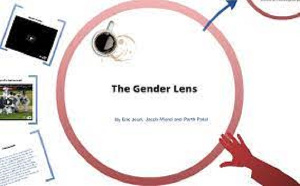Opinions of Tuesday, 28 March 2023
Columnist: Isaac Yaw Obeng
Applying gender lens to improve agriculture value chain
Government of Ghana established Development Bank of Ghana (DBG) in 2021. Its mandate is to increase the availability of medium to long term financial instruments to support Ghanaian businesses. The goal of the bank is to facilitate economic transformation and job creation. In view of its mandate, DBG has started engaging the stakeholders in the agricultural sector to discuss ways of improving value chains and ensuring sustainable growth in the industry.
The stakeholder engagement seeks to explore ways of improving access to finance, building infrastructure, promoting innovation, and improving the regulatory
environment. The bank will also discuss its commitment to supporting the agricultural sector through its various financing and advisory services.
In an effort to revamp the agriculture sector, there is the need to incorporate gender lens in the Bank’s investment policy decision making.
According Global Impact Investment Network, “Gender lens investing (GLI) is a strategy or approach that considers gender factors in the investment process.” It
includes investing in women owned/ led businesses, enterprises that promote gender equality in the workplace, and products or services that positively impact the lives of women and girls.
Women’s contribution to Agriculture in Ghana
Agriculture Census conducted in 2017/2018 showed that Women account for 50.5% of the agricultural population in Ghana. It has been posited that women contribute to about 70% of the country’s agricultural production, marketing and processing. However, they are confronted with several challenges including lack of ownership and limited access to productive and arable land, low literacy rates and
training; lack of access to information, low participation in agricultural governance, low access to seedlings; insufficient access to credit facilities etc. These discrepancies hinder the productivity and earnings of Ghanaian women in agriculture leading to the inability to reach their highest economic
potential.
Factors that limit women access to finance for investment
USAID 2019, estimates that “by empowering women farmers with access to land, new technologies, and capital as men, we can increase crop yields by 30 percent helping to feed a growing population.
Nonetheless, research has shown that women are slower to take advantage of financial services. They are more conservative and risk-averse than men. As many bank officials are often men, women may feel uncomfortable in interacting with them. women often lack or cannot access the necessary documentation to open an account or access credit due discriminatory laws, administrative barriers etc.
Often bank charges for transactions or accounts are prohibitive. Moreover, the “one size fits all” financial products and services are not beneficial to women. In the same vein, some investors perceive investment in women-owned/led businesses as risky as the probability of nonpayment is high even though research has proven otherwise. These and many other factors limit women access to finance for investment.
Incorporating Gender Lens Investment in DBG’s Investment Portfolio
In order to promote women-owned/led businesses, DBG needs to put in place the following policy measures:
Financial education: Women, on average, are less financially literate (Alliance for Financial Inclusion 2016), and are not familiar with banking and financial terminology. Hence, DBG needs to have a policy in place to educate women on financial literacy including entrepreneurship training for women entrepreneurs in financial education and management of business accounts, among other topics.
Dedicated investment portfolio that targets women: There is the need to develop targeted financial products for women since the “one size fits” products and services do not help. For example, provide lower-interest-rate loans, different repayment schedules, and alternative collateral sources. For example,
Nigeria’s Access Bank explored jewelry and household equipment as collateral options for women-owned businesses (Making Finance Work for Africa 2012). There should also be an investment portfolio dedicated to support women entrepreneurs and innovators or provide technology, equipment and other service support to women in Agriculture.
Train gender responsive personnel to handle women affairs: It more prudent to train credit officers on protocols, products, and procedures with a gender perspective. Better still all relationship managers must be trained in psychological and interpersonal skills to better understand and serve women clients.
Place women in higher decision making positions: Since fewer women than men end up in investment decision making roles, this can lead to bias and discrimination that prevents effective GLI. Hence, there is the need to ensure that women occupy decision-making roles on investment boards as this will help to
support adoption of GLI strategies.
The need to re-orient mindset towards financing or investing in women led businesses: There is the need to eschew the myth that investing in women owned businesses is riskier. Evidence shows that women are more cautious, like to build long-term relationships. There is proof that women have lower
churn rates and have a lower non-performing loan (NPL) rate than men.
Conclusion
It should be emphasized that, including gender lens in DBG’s investment portfolio is a good call. It will not only help to bridge gender inequality but also encourage investment in businesses that enforce protections for women, such as against gender-based violence; employ a more diverse workforce and provide and promote decent employment for women and address the intergenerational transmission of poverty.
Inclusive growth, which refers to the prosperity derived from the economy being shared equally across all sectors of society, is not possible without addressing gender gaps, which stand as a barrier to equitable and inclusive growth.
Entertainment










